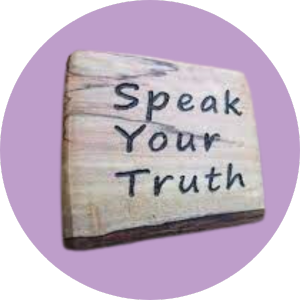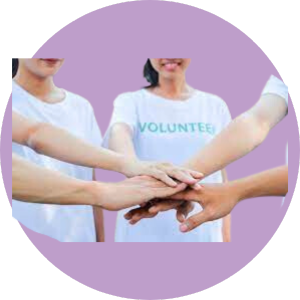Our relationship started as a happy one. He was charming, a track star, and showered me with attention. We were teens and high school sweethearts, and I thought we would stay that way forever.
I still remember the first time he was violent towards me. We were arguing, and he pushed me into a snowbank. I got up, and we continued walking as if nothing happened. Things only escalated from there.
It was my first relationship. I thought I was in love. I didn’t know love wasn’t supposed to hurt. It was hard to leave– despite the abuse, my feelings for this boy were strong, although misconstrued. I stayed in the relationship for the first year of college before I was able to break free.
Being young and confused, I didn’t know what love was supposed to feel like or look like. I thought abusive relationships affected isolated adults stuck in unhappy marriages, not valedictorians with plans to attend college. It would honestly be a long time before I could look back on the relationship and see it for what it was– toxic, abusive, and far from love.
I’m still healing from this abusive relationship that began when I was 16. I’m still trying to understand my emotions and learn what a healthy relationship is seven years later.
Teen Dating Violence Survivor
What is Teen Dating Violence (TDV)?
Teen dating violence, also known as dating violence, is abuse between two people in an intimate relationship between the ages of 13-19 [1].
Dating violence does not have to be physical abuse; it can include [2]:
- Physical violence— intentional acts of physical violence, like shoving, kicking, hitting, grabbing, choking, restraining.
- Sexual Violence— forcing or attempting to engage in a sexual act, such as intercourse, touching, or sexting without receiving consent.
- Psychological aggression (verbal/emotional)— tactics used to harm the victim emotionally. This can include name-calling, isolating the victim from family and friends, attempting to control the victim, and manipulation.
- Stalking— a pattern of unwanted attention that causes, or would reasonably cause, the victim fear
This is not an exhaustive list. Any time a person is intentionally causing harm to their intimate partner, it can be considered abuse. No one should feel afraid in their relationship or fear their intimate partner– that is NOT normal.
How common is TDV?
Teen dating violence affects millions of US teenagers each year. While TDV, like most violent crime types, disproportionately affects females, anyone can be a victim of TDV [2].
- One in three people will experience some type of intimate partner abuse before they reach adulthood [3].
- According to a CDC survey, 1 in 11 females and 1 in 15 males under 18 reported experiencing physical dating violence in the last year [2].
- One in 9 female and 1 in 36 male high schoolers report having experienced sexual violence in the last year from an intimate partner [2].
- LGBTQ+ youth are at a higher risk for TDV victimization. Forty-three percent of LGBTQ+ youth reported experiencing physical dating violence compared to 29% of heterosexual youth [4].
- Transgender youth, predominantly female, report the highest levels of TDV, with 89% of transgender youth reporting physical dating violence and 59% reporting emotional abuse [4].
The Impact on Teens
TDV, just like domestic violence, is ruthless, and the road to recovery is often long and uphill. This is why it is an issue that should not be minimized and, instead, should be taken as seriously as intimate partner violence in adults. As seen in the survivor story above, it can affect survivors long after leaving the abusive relationship. And for some victims of TDV, the consequences can affect every aspect of their teen years.
Victims/survivors of TDV are more likely to:
- Miss or receive low grades in classes due to feeling unsafe [5]
- Become pregnant or contract an STD [5]
- Engage in unhealthy behaviors, such as drinking, drugs, or disordered eating [2]
- Attempt or commit suicide [5]
- Have lowered self-esteem [5]
- Continue a pattern of abusive relationships [2]
- Face mental health issues, like depression and anxiety [2]
- Have trouble maintaining independence and establishing a personal identity in adulthood [5]
Advocating For Your Teen
Teenage years are meant for the giddy feeling of butterflies in the stomach. Many teens are experiencing their first relationship and learning what it means to be “in love.” Young relationships can set a precedent for their future relationships and their perception of what love is.
That is why one of the most effective ways of preventing teen dating violence is showing your teen or teens in your life what a healthy relationship should look and feel like while also opening up the discussion about what an unhealthy relationship looks like.
Characteristics of a healthy relationship:
- Respect. Both partners should like their feelings and wishes are valued and understood by their partner.
- Individual Identities. Both partners should have lives outside of the relationship. This includes spending time with friends, engaging in hobbies, and pursuing their interests. Partners should maintain, or even grow, their self-esteem when in the relationship.
- Openness and Trust. Both partners should feel comfortable being honest with each other and have trust in each other.
- Good Communication. Each partner should communicate with the other freely, without fear, and without getting hostile. Intimate partners should not ever resort to violence or name-calling when disagreeing and work together to solve problems.
Characteristics of an unhealthy relationship:
- Controlling behavior/Jealousy. One partner attempts to exploit the other partner. This can mean keeping him/her from seeing family members and friends, dictating what he/she wears and does, and making the majority of choices for the relationship.
- Hostility/Intimidation. An intimate partner using intimidation or hostility to manipulate the other member of the relationship.
- Dependence (Trauma Bond). When an intimate partner feels as if he/she cannot live without the other partner. They feel entirely reliant on their partner and cannot imagine life without them.
- Any type of violence. Intimate partners intentionally hurting or attempting to harm each other in any way. This can include physical, emotional, verbal, or sexual abuse.
**For information about what a healthy teenage relationship should look like, check out Dating Matters— a prevention model put forth by the CDC for educational use by individuals, peers, families, schools, and neighborhoods.
Receiving Help for Teens in an Abusive Relationship
For teenagers facing the dangerous reality of being in a toxic or abusive relationship, know you are not alone, and there are resources to help you reach the pathway of healing.
First of all, we encourage you to break your silence. Speak up to a peer, teacher, parent, law enforcement officer, or anyone else you trust. You can contact our helpline at 1-855-287-1777 or share your story.
You can also contact organizations within the community:
Find a Safe Place— you can enter your zip code and find a safe place near you.
The National Dating Abuse Helpline 1.866.331.9474 is similar to the Hotline and specializes in assisting teens and young adults.
National Center for Victims of Crime 1-800-FYI-CALL– serves victims of crime and assists them in finding proper counseling services.
Break the Cycle— for more information about teen dating violence and how to break the cycle.
Remember: Everyone deserves a loving and healthy relationship. No matter what your age is.
References
- Missouri Coalition Against Domestic and Sexual Violence. (n.d.). What is teen dating violence TDV. https://www.mocadsv.org/What-is-Teen-Dating-Violence-TDV/
- CDC. (2020, Jan 27). Preventing teen dating violence. https://www.cdc.gov/violenceprevention/intimatepartnerviolence/teendatingviolence/fastfact.html
- Love is Respect. (n.d.) Teen dating violence awareness month. https://www.loveisrespect.org/get-involved/tdvam/
- Teen Dating Violence. (2020, Oct 28). Studies show LGBT youth face higher risk of dating violence. https://www.teendvmonth.org/studies-show-lgbt-youth-face-higher-risk-of-dating-violence/
- Youth.gov. (n.d.) Consequences. https://youth.gov/youth-topics/teen-dating-violence/consequences








